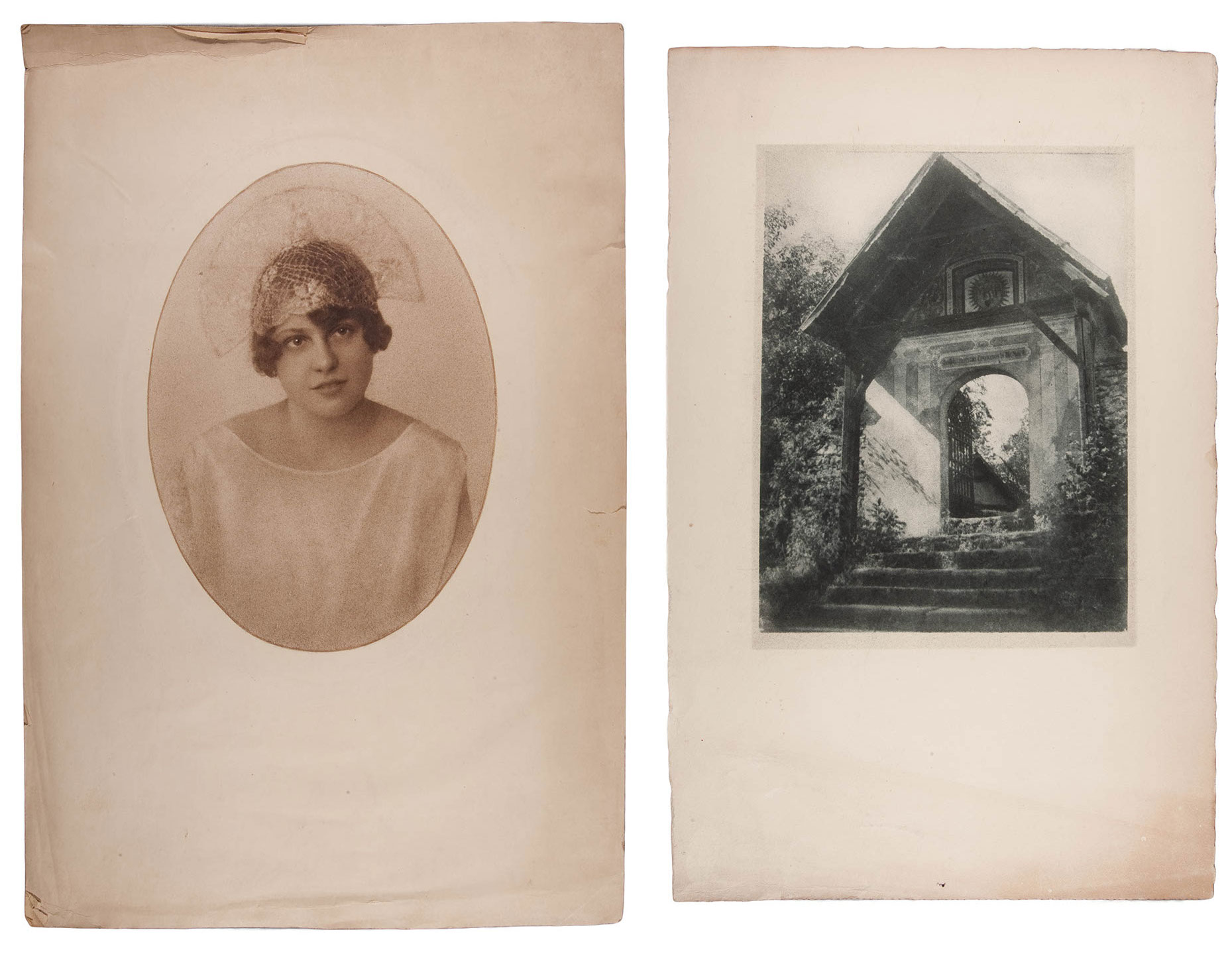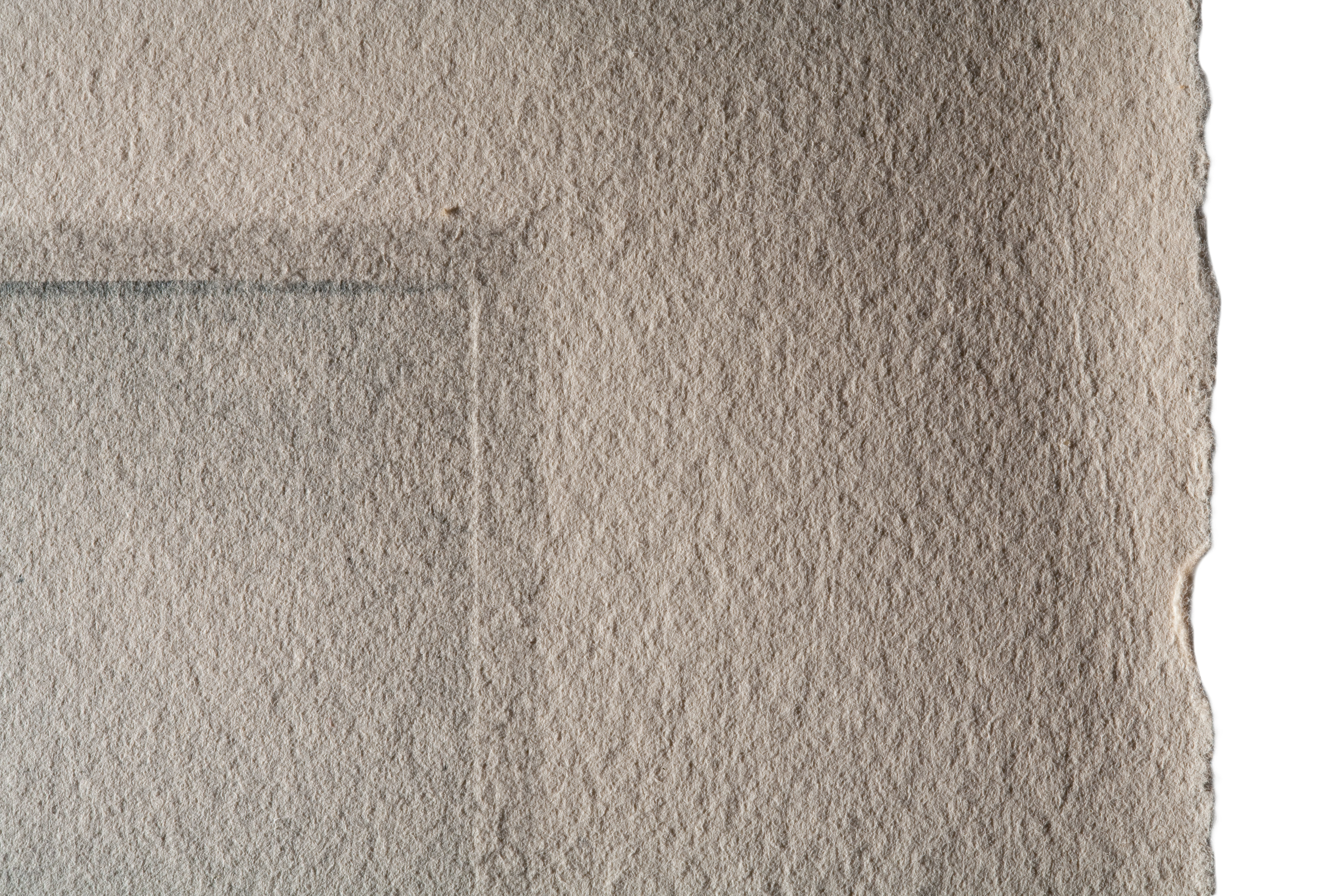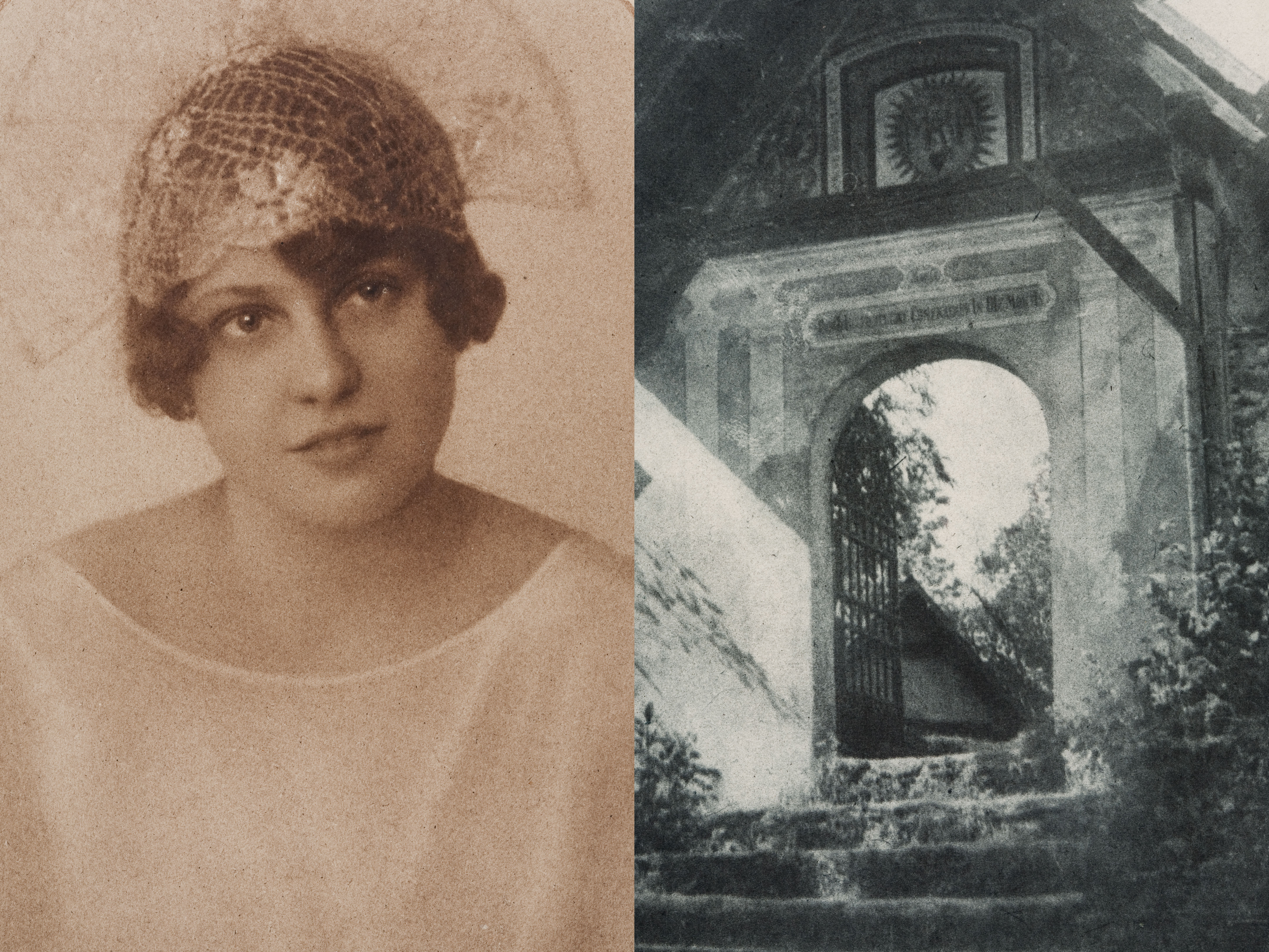Bromoil Transfer Object View
Support
Oil and bromoil transfer prints are on a paper support. One of the processes greatest attributes was that any high-quality paper of the photographer’s choice could be used. The literature recommends good quality writing, water color, drawing, or printing paper. More absorbent papers allowed for better transfers but if the paper was too rough or absorbent it would require additional sizing. Prints were made in a printing press which pressed the bromoil/oil print in contact with the transfer paper under high pressure—this could result in a "plate mark" or indentation.
Oil and bromoil transfer prints are on a paper support. One of the processes greatest attributes was that any high-quality paper of the photographer’s choice could be used. The literature recommends good quality writing, water color, drawing, or printing paper. More absorbent papers allowed for better transfers but if the paper was too rough or absorbent it would require additional sizing. Prints were made in a printing press which pressed the bromoil/oil print in contact with the transfer paper under high pressure—this could result in a "plate mark" or indentation.
What to look for: High quality paper support. Paper may be in a variety of tints, textures, and weights. A slight real or fake plate mark may be present.

Examples of Bromoil Transfer paper support.

This print has a slight indentation, or plate mark.
Image: Color/Tone, Quality
Bromoil and oil originally used greasy lithographic inks, but as the bromoil and bromoil transfer processes gained popularity, photographic supply companies began to offer products specially made for the process including inks. There were a wide variety of inks available for the bromoil and bromoil transfer processes; in a 1934 catalog the Drem Company offered twelve different colors, and Lechertier-Barbe, LTD offered ten different colors, all of which could be mixed with each other to obtain a wide range of shades and colors. There were also inks available for three-color bromoil transfer. The process required greasy inks because, as with lithography, it relied on the fact that oil and water repel one another. Greasy ink was applied to a wet gelatin relief image and then transferred to another support, resulting in a soft image.
Bromoil and oil originally used greasy lithographic inks, but as the bromoil and bromoil transfer processes gained popularity, photographic supply companies began to offer products specially made for the process including inks. There were a wide variety of inks available for the bromoil and bromoil transfer processes; in a 1934 catalog the Drem Company offered twelve different colors, and Lechertier-Barbe, LTD offered ten different colors, all of which could be mixed with each other to obtain a wide range of shades and colors. There were also inks available for three-color bromoil transfer. The process required greasy inks because, as with lithography, it relied on the fact that oil and water repel one another. Greasy ink was applied to a wet gelatin relief image and then transferred to another support, resulting in a soft image.
What to look for: A monochromatic image consisting of ink in any color. Three-color images are possible, but not common. Images tend to be soft.

Transfer prints have a soft image quality and any color ink is possible.
Formats/Mounting
Oil prints were contact printed, therefore oil transfers tend to be smaller, about the same as standard negative sizes. Bromoil prints were made by enlargement, and therefore tend to be larger than oil, but can be in any size up to the largest standard paper size. Mounting was common during the time this process was popular, but not necessary.
Oil prints were contact printed, therefore oil transfers tend to be smaller, about the same as standard negative sizes. Bromoil prints were made by enlargement, and therefore tend to be larger than oil, but can be in any size up to the largest standard paper size. Mounting was common during the time this process was popular, but not necessary.
Information Written or Printed on Object
This process was primarily used by artists. Prints may be signed, titled, or dated.
This process was primarily used by artists. Prints may be signed, titled, or dated.
What to look for: Signatures, dates, titles may be present.